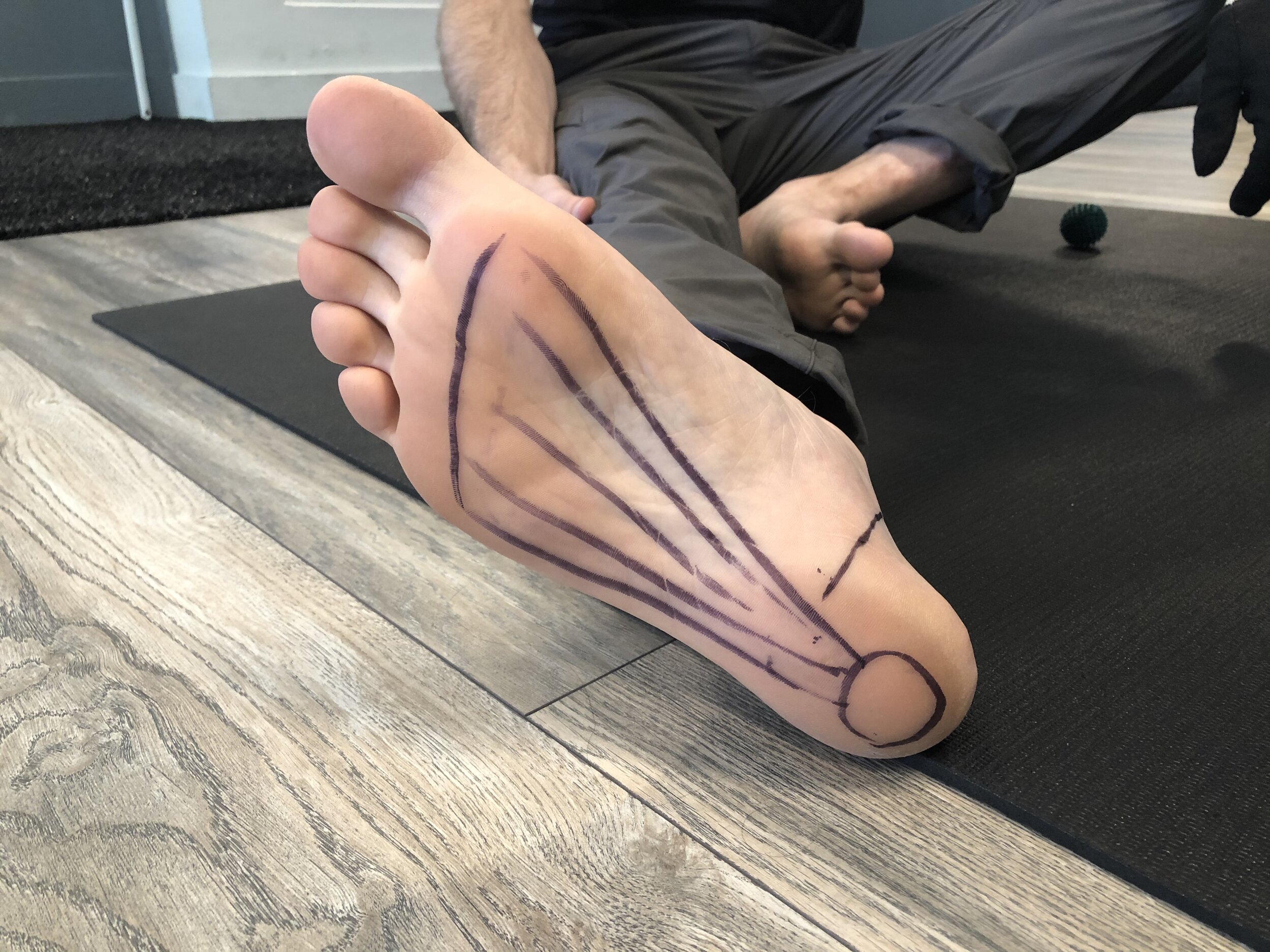Plantar Fasciitis and Foot Pain
Plantar Fasciitis - Heel Pain - Stabbing, Knife-like Foot Pain that makes you want to Scream...
“What is this zing in my foot!?”
There’s nothing like getting out of bed after a good night’s rest, only to step down and feel like your foot just got struck by lightning. At Crux Chiropractic, we get this complaint all the time. A patient will be in the middle of training for the Milwaukee Lakefront Marathon when they will call us, complaining that they cannot take a step without a sharp pain in the bottom of their heel. This is an incredibly common, but manageable injury called plantar fasciitis. You don’t have to be a runner or triathlete to experience this type of pain. It is the most common reason for pain in the heel, sometimes lasting for years. We believe you shouldn’t have to live with it. Here is some information about what this condition is, how it originates, and what can be done about it. Hopefully, it will help you manage your symptoms so you can get back to doing the things you love.
Let’s start with a little anatomy. The plantar fascia is a fibrous band that acts as a stabilizer of the foot while running, walking, and doing all the other things we do on our feet. It also acts as a protective layer for the sensitive tissues which lay deeper inside the foot. It attaches to the heel and fans out through the foot to all five toes. As the foot goes through a stepping motion, from heel to toe, this bundle of fascia draws tight and stiff, acting with the muscles of the foot as a springboard to support the next step. Even though the plantar fascia spans the whole foot, the most common place people feel pain is closer to the heel where the fibers meet up into a common band.
So, what is plantar fasciitis? While it does have a short-lived inflammatory component, this condition is best described as the pain associated with the failure of the tissues to heal properly. Whether this is because of repeated micro-traumas, or an acute event, this pain can be a result of a few things. One common cause is a lack of functional stability of muscles of feet or excessive tension in the muscles in the back of the leg, including hamstrings and calf. If the muscles of the feet aren’t doing their fair share of the work, the plantar fascia will be unduly stressed. This can be related to tightness in the muscles of the back of the leg, primarily the calf. This tension pulls on the back side of the heel bone which, in turn, tensions the plantar fascia. Plantar fasciitis can also be mimicked by tension or compression on the nerves that supply sensation of the foot. In the office, it’s common for us to see patients that have struggled with what they believe to be plantar fasciitis for a long time, only to test it and realize the condition is related to nerve compression in the lower leg. In the case of true plantar fasciitis, symptoms for most people can last for a long time. So, most of the treatments are for management and prevention. Once the condition is controlled, treatment involves slowly and progressively loading the tissues to ensure a safe and productive return to your activity.
So what can you do about it? There are various exercises and at-home therapies which are distinctly helpful to many of our patients. The first goal is to calm the tissues down. Rolling on a textured ball can help alleviate pain and encourage the fibers of the plantar fascia to align better. Stretching and relaxing tissues along the back of the leg is also helpful. Once this step is done, you can start to focus on fixing the root cause, which is often a functional weakness somewhere else in the system. Strengthening and activation exercises for the feet and legs can help get the body moving better to take a load off the affected tissues. Lastly, you progressively return to loading the tissue by returning to normal activities slowly and gradually. Below, you will find a series of videos demonstrating exercises we teach our patients with plantar fasciitis.
Some people have trouble getting through the initial phases of healing on their own. If you need help managing your plantar fasciitis, Crux can help. There are a handful of manual techniques we use to accompany the corrective exercises. These include joint mobilization/adjustments, Active Release Technique, Graston or Instrument Assisted Soft Tissue Mobilization (IASTM), and Taping. .
You can make an appointment at our Shorewood clinic by clicking below. If you have specific questions, give us a call. We’ll get you back on your feet...comfortably.


